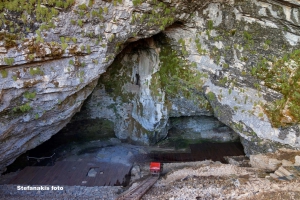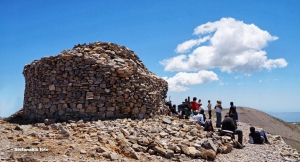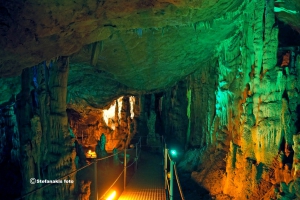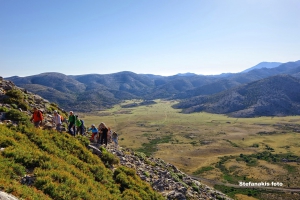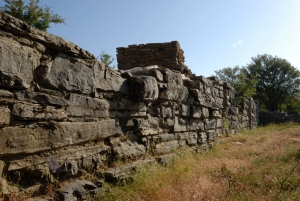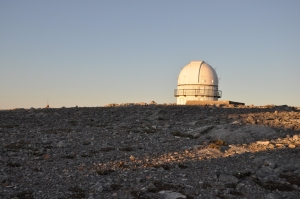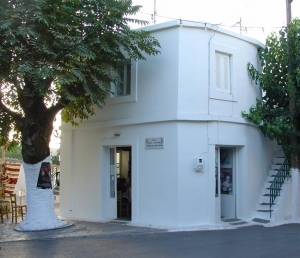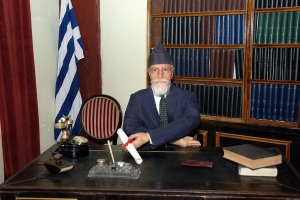Ideon Cave (or Ideon Antron) is located on the eastern slopes of Mount Ida (Psiloritis), in the plateau of Nida. The distance of the cave from Anogia is 24km and from Rethymno it’s 78km. The cave has not any special geological value, but has enormous mythological and cultural value, as this is the cave in which, according to the legend, the greatest Greek god, Zeus, was grown up. Today, thousands of tourists visit the cave every year, especially during the summer months.
The imposing Ida Range has the highest peak of Crete, Timios Stavros at 2546m altitude. For reaching Timios Stavros, there are many ways from both north and south sides. The view for the peak is amazing towards all directions.
Cave Zoniana, Sfendoni or Sfendoni's Hole, is located 1km north of Zoniana village in Mylopotamos, about 43km west of Heraklion and 52 southeast of Rethymno. It is shaped on the southern slopes of the hill Halepa at an altitude of 630m. The cave is accessible and is the most beautiful cave in Crete and one of the most beautiful in Greece, with rich stalactite and stalagmite decoration. It belongs to the Natural Park of Psiloritis, which is protected by UNESCO.
The plateau can be reached via a dirt road starting from the picturesque village of Anogia, but also via a rugged dirt track from Gergeri. The plateau is used as pasture and is not cultivated. Due to overgrazing, you we’ll not see any trees in the plain, although it was previously covered by dense forest.
Ancient Zominthos is located 7km west of Anogia, on the road heading to the plateau of Nida. Discovered in 1982, Zominthos is one of the most important archaeological discoveries in Crete, compared my many to that of Knossos.
The Skinakas Observatory is a research facility operated jointly by the Foundation of Research and Technology - Hellas (F.O.R.T.H.), the University of Crete and the Max Planck Institute for Extraterrestrial Physics of Germany.
Near the central square of Anogia you can visit the humble house of Nikos Xylouris, the most famous singer and lyra player of Crete (lyra is the Cretan traditional instrument). The house - museum is basically a small room where there are relics and photographs of the legendary Xylouris and which have been formed by his sister Zouboulia.
The museum is one of two wax museums that exist in Greece and is an idea of the sculptor Dionysis Potamianos. It is located at Zoniana, at the northern foothills of Psiloritis Mount.
- 1
- 2















